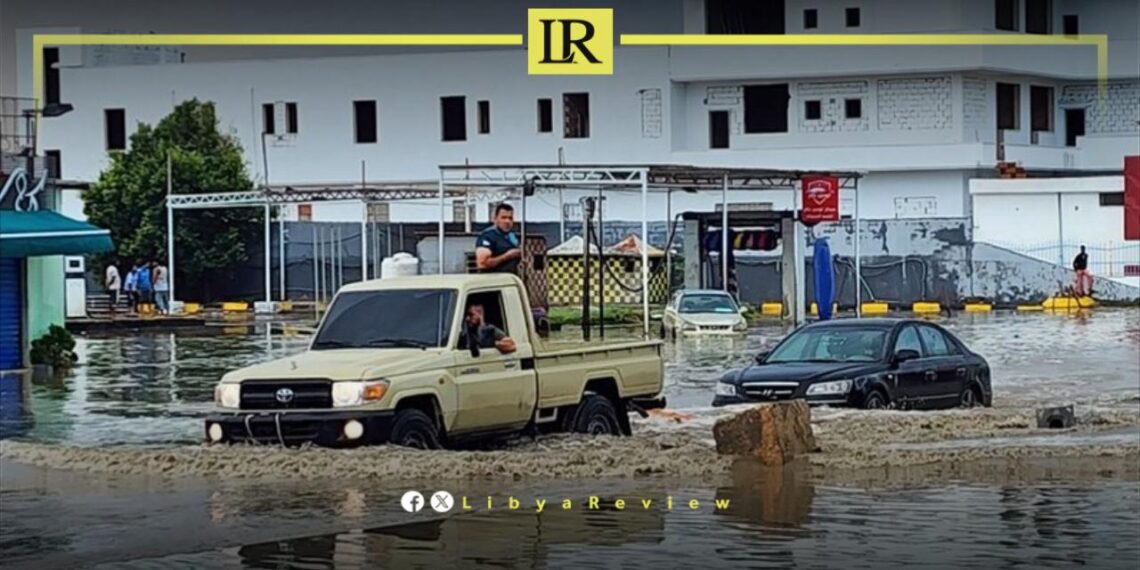On Saturday, the Libyan Red Crescent announced the closure of the road connecting the cities of Tarhuna and Bani Walid due to severe flooding caused by heavy rainfall. Rising water levels along the route have created hazardous conditions, prompting authorities to warn residents and travelers to avoid the area until the situation improves.
The National Center of Meteorology had previously issued a warning about heavy rainfall in various regions of Libya, with particular concern for areas including Qarabulli, South Zliten, Misrata, Tarhuna, Msallata, and Bani Walid. The rainfall has caused local rivers and valleys to overflow, heightening the risk of flooding and other dangerous conditions in these areas.
In response to the looming threat of floods, Libya’s outgoing Government of National Unity (GNU) held an emergency meeting in Tripoli. The meeting brought together representatives from key ministries such as Health, Interior, Local Governance, and Water Resources, along with emergency services including the Emergency Medical and Ambulance Services, Agricultural Police, and the Municipal Guard. Various agencies, including water and sanitation companies, public services, the National Safety Authority, and the National Center of Meteorology, were also in attendance.
During the meeting, the head of the National Center of Meteorology presented a detailed analysis of the weather patterns expected in Libya during the first half of September. The presentation highlighted the likelihood of continued heavy rainfall, particularly in southern and central regions, and areas near the borders with Sudan, Chad, and Niger. Specific regions such as the Thum al-Barri border crossing, the Kilikha Mountains, Tibesti, Al-Awainat, Sara, and Tazirbu were identified as high-risk areas.
The Ministry of Water Resources also provided an update on the status of 17 dams across the country. Despite the heavy rains, the ministry assured the public that water levels at these dams remain below critical levels, reducing the immediate risk of breaches.
The National Center of Meteorology has continued to emphasize the importance of caution as heavy rains persist, particularly in southern and central Libya. Recent downpours have already led to the overflow of several rivers, including those in Zliten and Bani Walid, raising concerns about further flooding in these areas.
The forecast also indicated a possibility of thunderstorms in central and southern regions, including areas around Qatrun. Northern regions, particularly near the coast and in areas like Benghazi and the Green Mountain, may also experience scattered thunderstorms as cloud cover increases.


